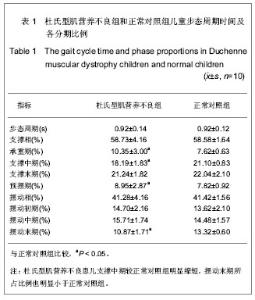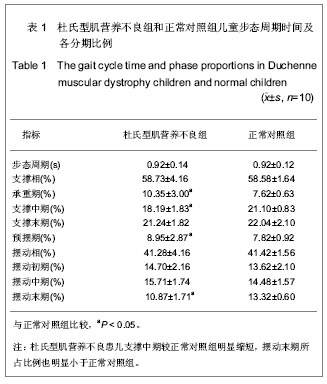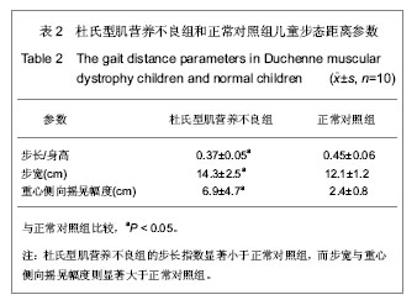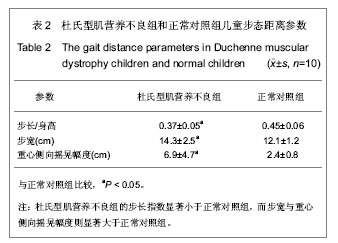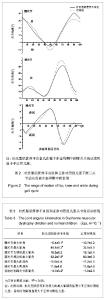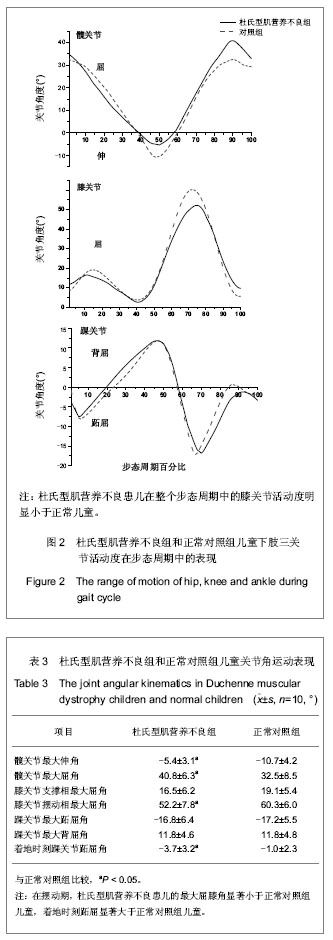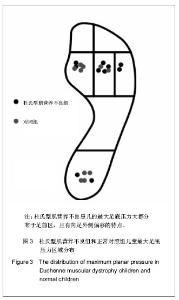| [1] Hsu JD,Furumasu J. Gait and posture changes in the Duchenne muscular dystrophy child. Clin Orthop Relat Res. 1993;(288):122-125.[2] D'Angelo MG,Berti M,Piccinini L, et al. Gait pattern in Duchenne muscular dystrophy. Gait Posture.2009;29(1): 36-41.[3] Ganea R,Jeannet PY,Paraschiv-Ionescu A, et al. Gait assessment in children with duchenne muscular dystrophy during long-distance walking. J Child Neurol.2012;27(1): 30-38.[4] Melkonian GJ,Cristofaro RL,Perry J, et al. Dynamic gait electromyography study in Duchenne muscular dystrophy (DMD) patients. Foot Ankle.1980;1(2): 78-83.[5] Sutherland DH,Olshen R,Cooper L, et al. The pathomechanics of gait in Duchenne muscular dystrophy. Dev Med Child Neurol.1981;23(1): 3-22.[6] Ando N,Fujimoto Y,Ando M, et al. A new method of gait analysis in Duchenne muscular dystrophy. Rinsho Shinkeigaku.1992;32(9): 962-968.[7] Toyoshima E,Mano Y,Ando K, et al. Recording and analysis of gait foot-forces using telemetric force-transducers in patients with Duchenne musculair dystrophy: serial assessment of the pathological gait. Electromyography and clinical neurophysiology.1987;27(6-7): 355-361.[8] Kellis E. Plantar pressure distribution during barefoot standing, walking and landing in preschool boys. Gait Posture.2001; 14(2): 92-97.[9] Gaudreault N,Gravel D,Nadeau S, et al. Gait patterns comparison of children with Duchenne muscular dystrophy to those of control subjects considering the effect of gait velocity. Gait Posture.2010;32(3): 342-347.[10] McGraw B,McClenaghan BA,Williams HG, et al. Gait and postural stability in obese and nonobese prepubertal boys. Arch Phys Med Rehabil.2000;81(4): 484-489.[11] Khodadadeh S,McClelland MR,Patrick JH.Variations of gait parameters in Duchenne muscular dystrophy. Proc Inst Mech Eng H.1990;204(4): 241-243.[12] Armand S,Mercier M,Watelain E, et al. A comparison of gait in spinal muscular atrophy, type II and Duchenne muscular dystrophy. Gait Posture.2005;21(4): 369-378.[13] Khodadadeh S,McClelland MR,Patrick JH,et al.Knee moments in Duchenne muscular dystrophy. Lancet.1986; 2(8506): 544-545.[14] Gaudreault N,Gravel D,Nadeau S. Evaluation of plantar flexion contracture contribution during the gait of children with Duchenne muscular dystrophy. J Electromyogr Kinesiol.2009; 19(3): e180-186. |
